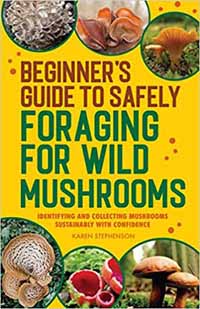

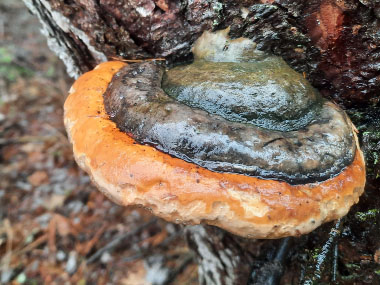
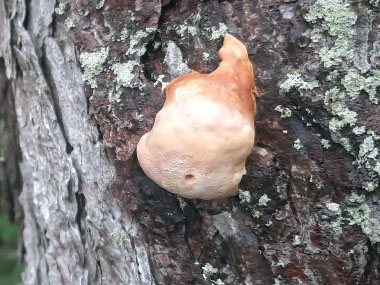
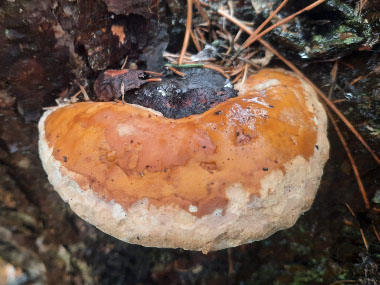
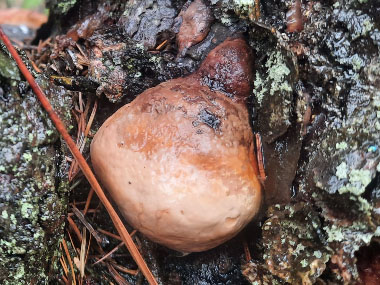
Do not eat any fungi that has not been properly identified by a qualified professional, some are DEADLY when ingested. All edible wild fungi MUST be cooked.
Red Belted Polypore is saprobic and parasitic fungi growing solitary or in groups on decaying wood or living trees. Recognized as a new species in 2019, it was segregated from Fomitopsis pinicola species complex. Fomitopsis means having the appearance of Fomes; mounceae honors Irene Mounce,(1894–1987), a Canadian mycologist. Red Belted Polypore has a long history of traditional uses. Like many polypores, is useful as a fire-starter and to keep coals alive when moving camp. When mixed with tobacco and smoked, it was said to help treat a headache. When dried and powder it was used to stop bleeding and help heal the wound. It is an anti-inflammatory, anti-viral, anti-bacterial, anti-tumor, and more.
Type
Distinguishing Features
The upper infertile surface, appearing as though it is varnished in young brackets, gradually dulls with age. The caps are concentrically grooved; covered at least in part when young with red to brown to blackish resinous crust, becoming gray to reddish-brown to blackish-brown or nearly black. They usually have a resinous, reddish band near the whitish to cream-colored thickened margin.
Height
This polypore doesn't have height, but its cap can grow up to 45 cm (18") wide.
Habitat
This perennial polypore is found primarily on dead conifers, sometimes living, and occasionally on birches or aspens.
Spore Print
White to very pale lemon yellow.
Season
Brackets can be seen all year round, but these perennial fungi shed their spores in late summer and autumn. They can live several years. If you cut through a bracket it is easy to count the number of tube layers and hence the age of the fruitbody.
Gills
This is a polypore so there are no gills. They have small white tubes that are packed together.
Edibility
Technically, this is not edible; however, you can let it dry, grind it into a powder and use it in this form. Alternatively, if you do not have the equipment to accomplish this, break it into small pieces and use this for making soup broth, making tea, or adding it to coffee grounds to boost the goodness of your coffee.
Other Name
Red Belted Conk.
Recipes
To support our efforts please browse our store (books with medicinal info, etc.).
Winter Survival Food Handbook

PDF Plant Magazines
Types of Wild Food
Geographic Zones Seasons
Disclaimer
EdibleWildFood.com is informational in nature. While we strive to be 100% accurate, it is solely up to the reader to ensure proper plant identification. Some wild plants are poisonous or can have serious adverse health effects.
We are not health professionals, medical doctors, nor are we nutritionists. It is up to the reader to verify nutritional information and health benefits with qualified professionals for all edible plants listed in this web site. Please click here for more information.
Why Edible Wild Food?
- Food costs are rising
- Free, wild food is readily abundant
- Wild food adds nutrition to your diet
- Wild food can help treat various medical conditions





